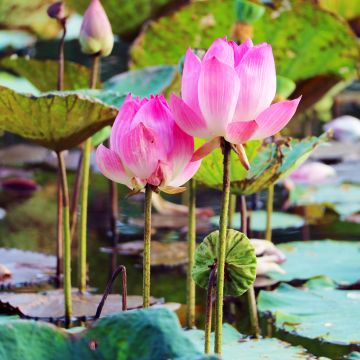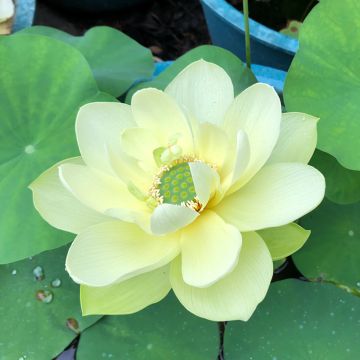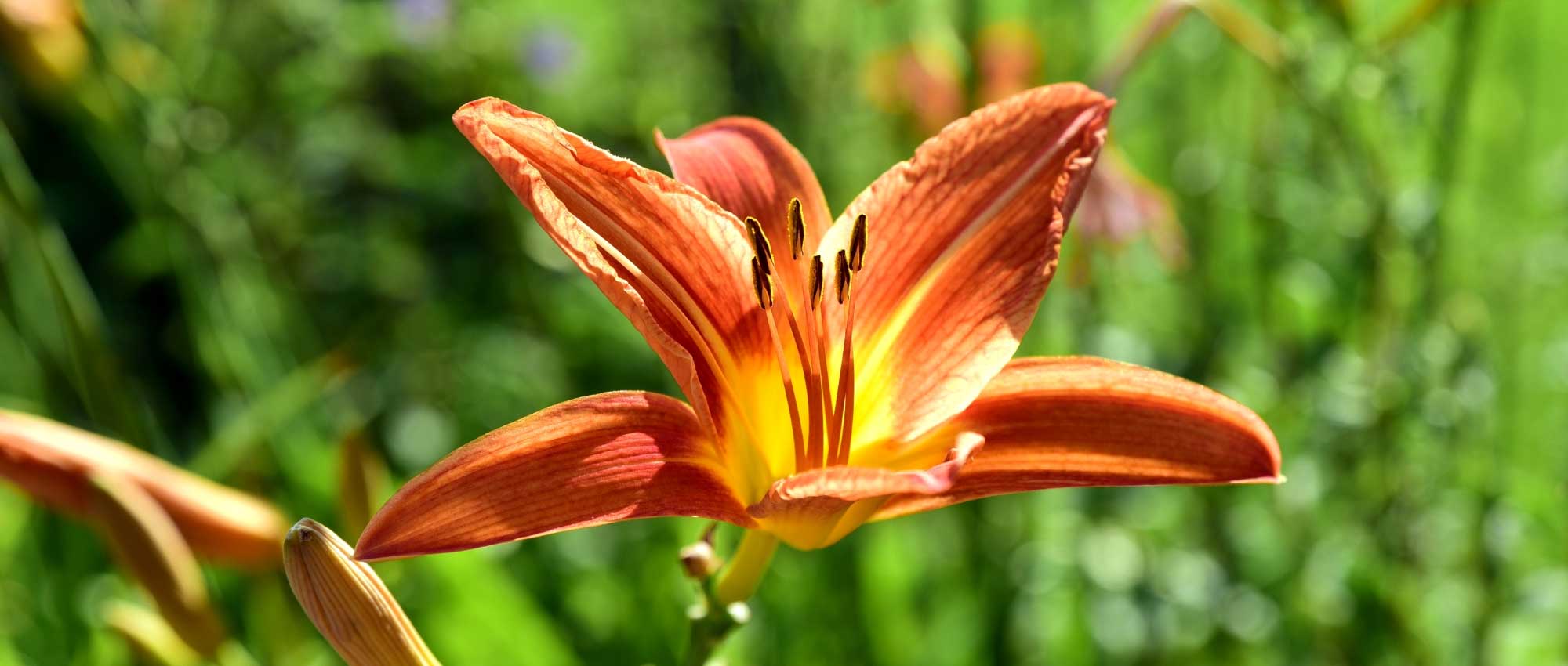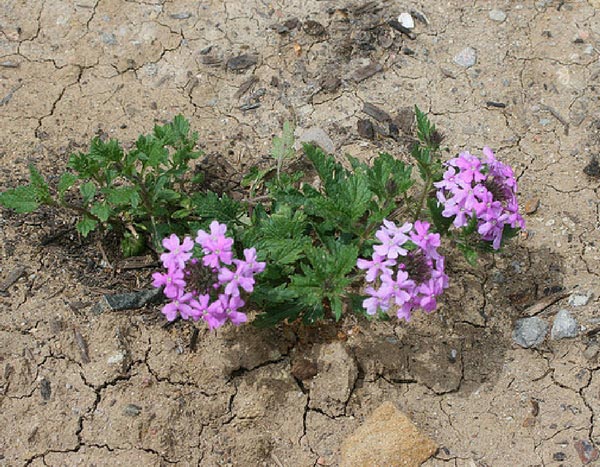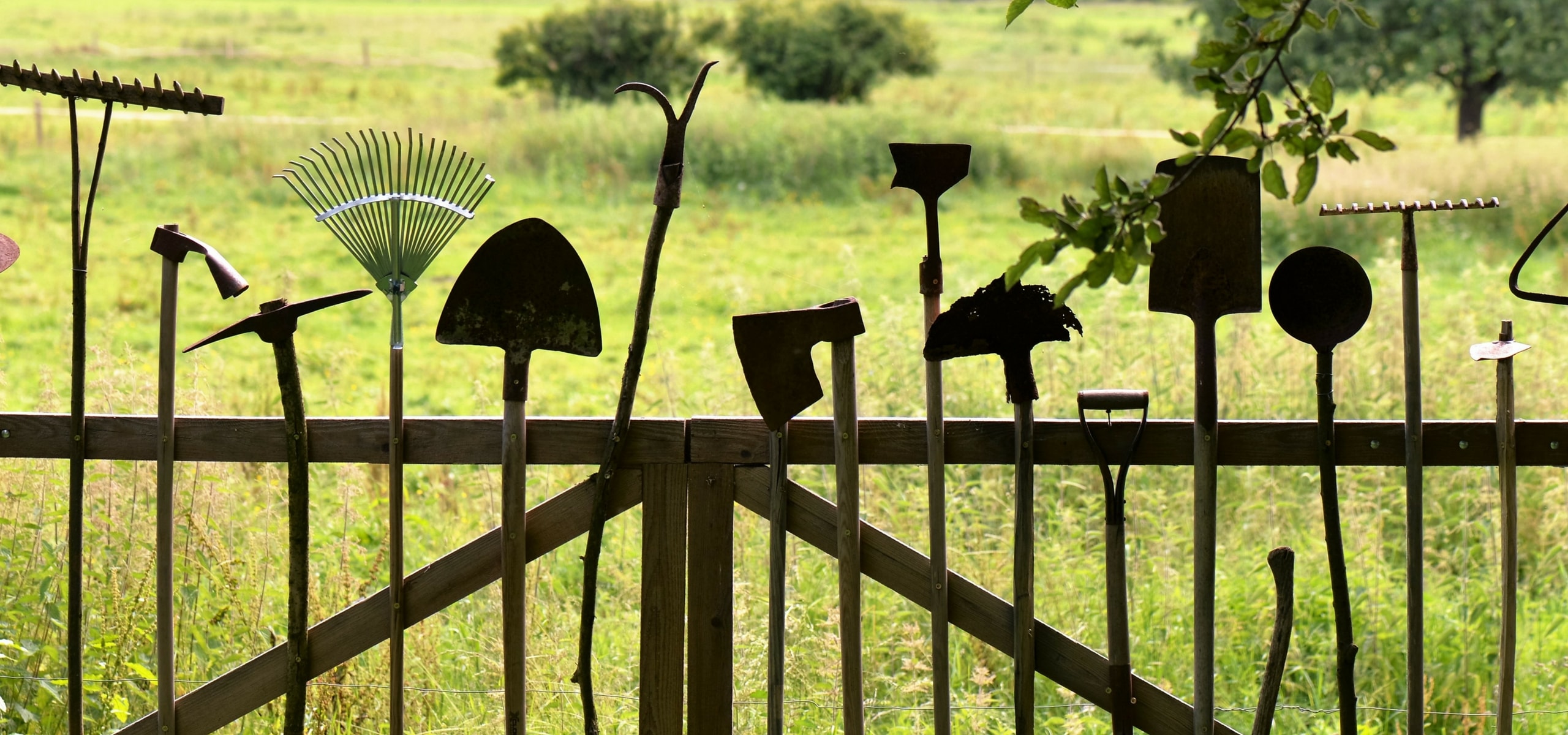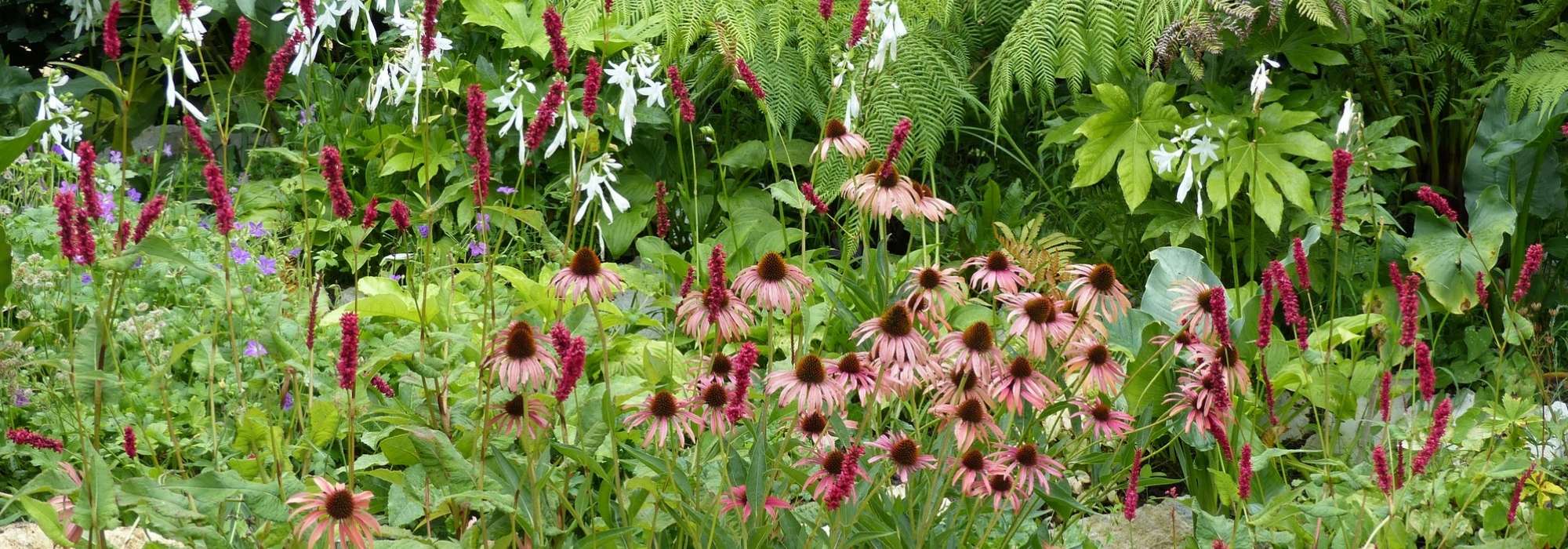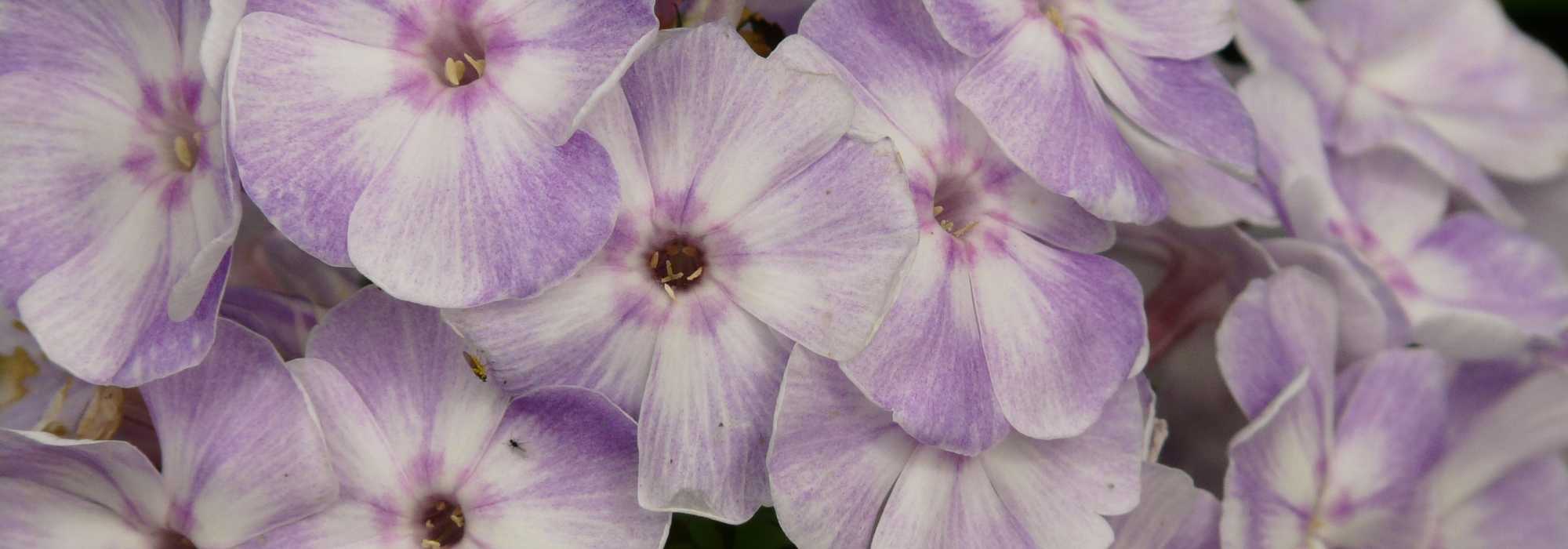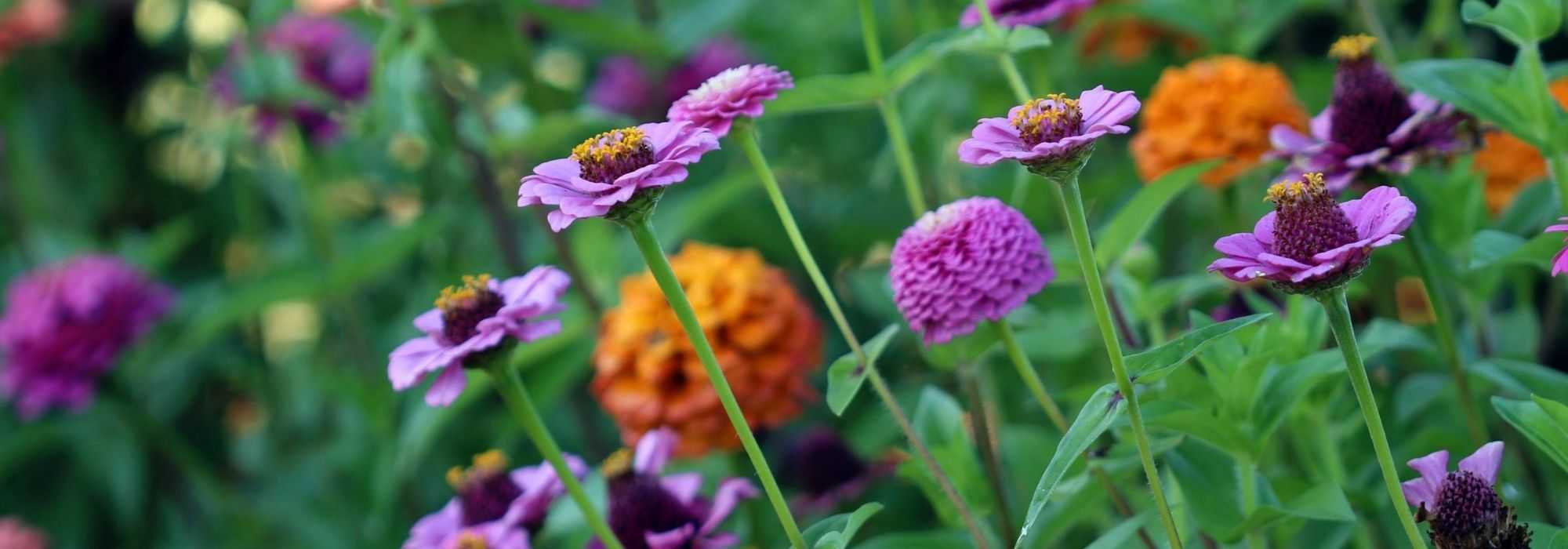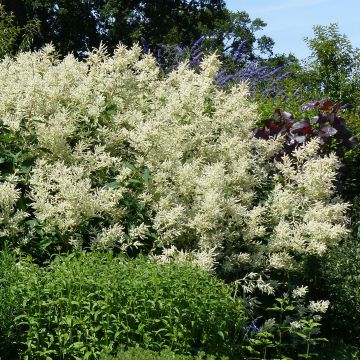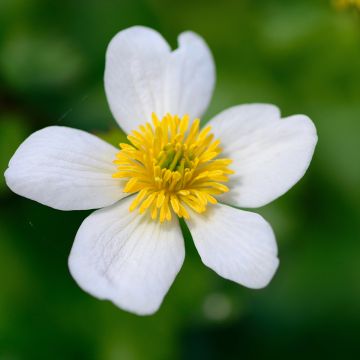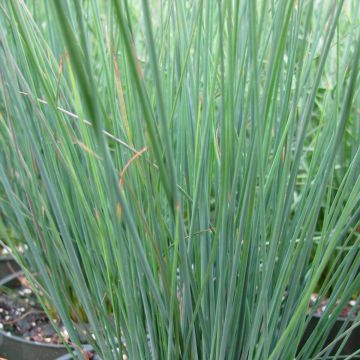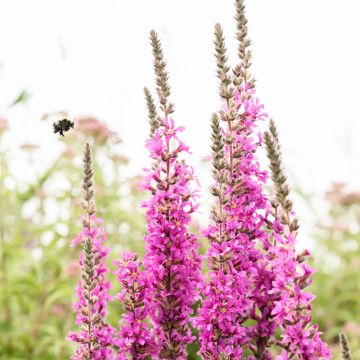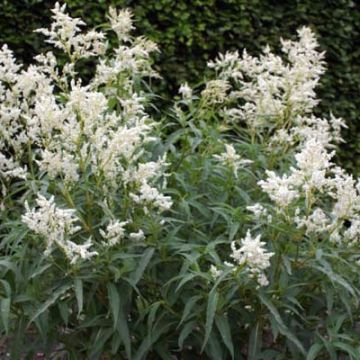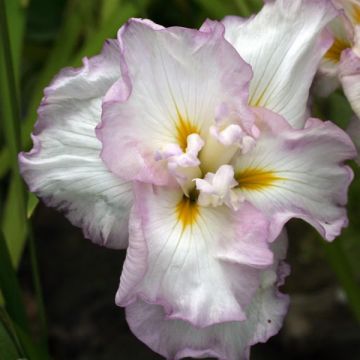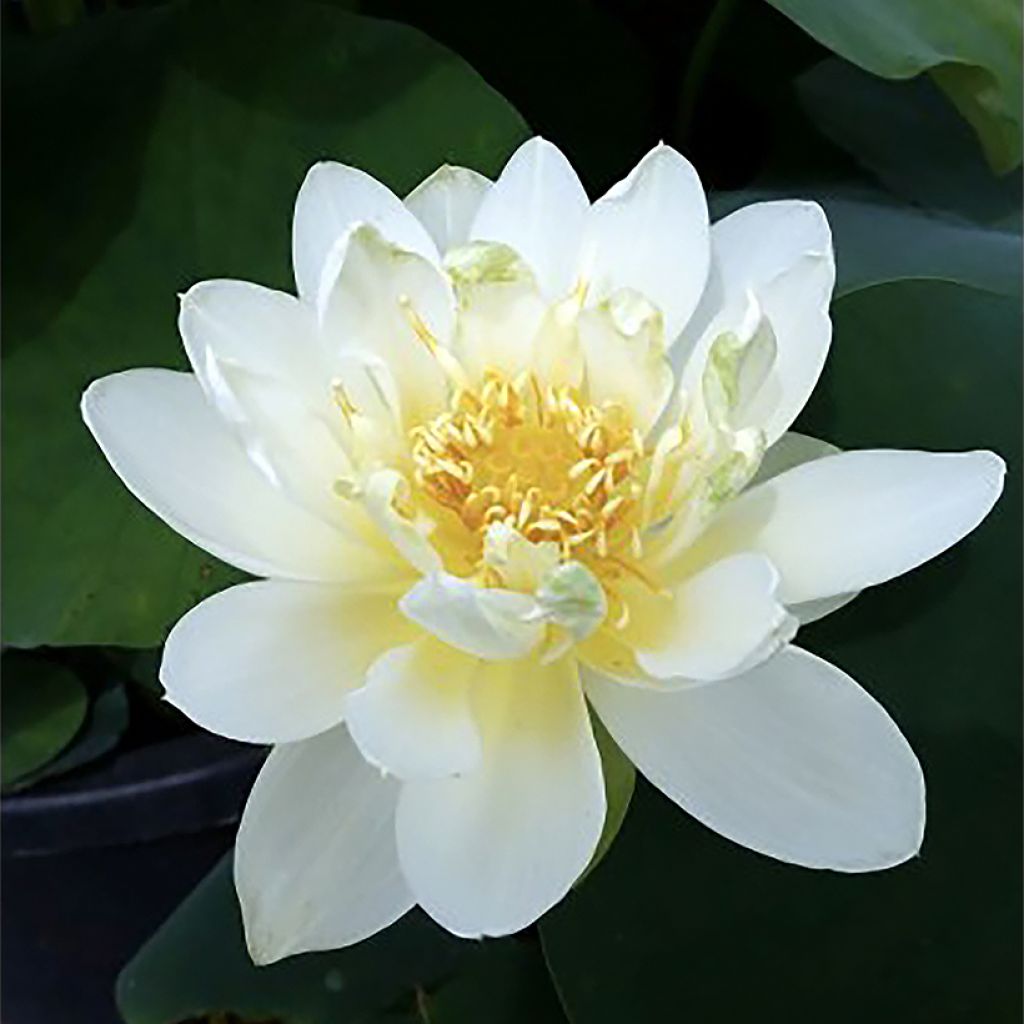

Nelumbo Jin Hehuan - Lotus
Nelumbo Jin Hehuan - Lotus
Nelumbo Jin Hehuan
Sacred Lotus, Indian Lotus, Lotus
Special offer!
Receive a €20 voucher for any order over €90 (excluding delivery costs, credit notes, and plastic-free options)!
1- Add your favorite plants to your cart.
2- Once you have reached €90, confirm your order (you can even choose the delivery date!).
3- As soon as your order is shipped, you will receive an email containing your voucher code, valid for 3 months (90 days).
Your voucher is unique and can only be used once, for any order with a minimum value of €20, excluding delivery costs.
Can be combined with other current offers, non-divisible and non-refundable.
Why not try an alternative variety in stock?
View all →This plant carries a 6 months recovery warranty
More information
We guarantee the quality of our plants for a full growing cycle, and will replace at our expense any plant that fails to recover under normal climatic and planting conditions.
Description
Nelumbo 'Jin Hehuan' is a mini lotus variety, or "Bowl lotus", perfectly suited to terrace ponds and container cultivation. Its small, semi-double, creamy yellow to ivory flowers can be admired throughout the summer. With the true essence of the sacred Indian lotus, this plant is simply less exuberant. It features round, decorative leaves and produces curious, watering-can-shaped fruits. A remarkable variety for very small containers, its rhizome should be planted under 10 to 20 cm of water.
Lotus 'Jin Hehuan' is sometimes sold under the name 'Yellow Silk tree'. It is an aquatic perennial from the Nelumbonaceae family. The native range of the wild Nelumbo nucifera includes Southeast Asia (India, Nepal...) and Northern Australia, where it thrives in large ponds and muddy canals, standing majestically above the water. Lotus and dwarf water lilies are ideal plants for decorating small ponds. Most flower for many weeks with minimal care. The lotus also plays a vital role in maintaining the balance of an aquatic environment by oxygenating the water.
Nelumbo 'Jin Hehuan' is a deciduous plant: its foliage emerges in spring and dies back before winter. Its blue-green, upright leaves have a flat or slightly concave surface with gently wavy edges. Water droplets bead on their surface due to the hydrophobic quality of the epidermis. The entire, peltate lamina, measuring 10 to 15 cm in diameter, connects to the rhizome via a slender petiole attached beneath the leaf's centre. The plant will grow up to 40 cm above the water's surface. Flowering begins between June and July and continues until September. The semi-double flowers measure 5-10 cm across, lasting several days before fading, with new buds continually replacing them. After flowering, highly decorative fruits form, resembling a watering-can spout dotted with small holes that release the seeds when ripe. These are often used in dried flower arrangements and contain numerous seeds that eventually sink and germinate in the mud.
The mini Lotus has no equal for enhancing terraces and balconies. It adapts perfectly to cultivation in various watertight containers. The number of flowers produced depends on the container size. In a 30 cm diameter pot, the plant will produce 3 to 8 flowers; 8 to 15 in a 50 cm container; and up to 25 in an 80 cm bowl or barrel. Pair it with other aquatic plants like Hippuris or bladderwort. The perfection of the sacred lotus (Nelumbo nucifera) flower and fruit makes it a symbol of purity in several religions. In Buddhism, its sacred character stems from the belief that Buddha appeared floating on its leaf. In Hinduism, it is seen as the cradle of the universe.
Report an error about the product description
Flowering
Foliage
Plant habit
Botanical data
Nelumbo
Jin Hehuan
Nelumbonaceae
Sacred Lotus, Indian Lotus, Lotus
Nelumbo Yellow Silk tree
Cultivar or hybrid
Other Nelumbo - Lotus
View all →Planting and care
Apart from a few precautions, growing dwarf Lotus does not require any special arrangements. Dwarf Lotus needs a sunny location. It can withstand temperatures as low as -12°C, provided it is submerged deeply enough. Plant the rhizome without breaking it, horizontally, in late spring, in a pot or directly in the mud, between 10 and 20 cm below the water surface. Bury the crown under 10 cm of rich silt or clay (never use horticultural compost, as it would rise to the surface and encourage algae growth). For shallow ponds, planting in a container is possible, but it will be essential to overwinter the rhizomes in damp sand, protected from frost. You can plant the rhizomes in a wicker basket or a fine mesh container, 30-40 cm in diameter (wider than tall), which is then sunk into the required spot. Give them the sunniest spot in the water feature. Space each rhizome at least 50 cm apart.
In regions with harsh winters, it is best to keep the rhizome in a damp pot, protected from frost, from October to May.
Never leave Nelumbo rhizomes exposed to sunlight or air to prevent them from drying out; plant them immediately upon receipt or purchase. If you have fish in your pond, it is advisable to spread a good layer of coarse gravel on the surface of the planted pot to discourage them from digging in the soil and thus dirtying the water. The development of Nelumbos will be optimal if planted in containers suited to their growth. Lotuses are greedy plants: apply a balanced, controlled-release fertiliser at planting and then annually at the start of the growing season (for example: Osmocote 10-11-18-2 with a 5-6 month duration). During summer, remove excess leaves growing in the centre of the clump, keeping only the most vigorous ones. Also remove any yellowed or spotted leaves, as well as aquatic weeds emerging from the surface. Be careful, contact with Lotus foliage may cause an allergic reaction!
Watch out for aphid infestations on the foliage. Introduce ladybird larvae or spray black soap on the leaves. Remove yellowed leaves at the end of summer.
Planting period
Intended location
Care
Planting & care advice
This item has not been reviewed yet - be the first to leave a review about it.
Similar products
Haven't found what you were looking for?
Hardiness is the lowest winter temperature a plant can endure without suffering serious damage or even dying. However, hardiness is affected by location (a sheltered area, such as a patio), protection (winter cover) and soil type (hardiness is improved by well-drained soil).

Photo Sharing Terms & Conditions
In order to encourage gardeners to interact and share their experiences, Promesse de fleurs offers various media enabling content to be uploaded onto its Site - in particular via the ‘Photo sharing’ module.
The User agrees to refrain from:
- Posting any content that is illegal, prejudicial, insulting, racist, inciteful to hatred, revisionist, contrary to public decency, that infringes on privacy or on the privacy rights of third parties, in particular the publicity rights of persons and goods, intellectual property rights, or the right to privacy.
- Submitting content on behalf of a third party;
- Impersonate the identity of a third party and/or publish any personal information about a third party;
In general, the User undertakes to refrain from any unethical behaviour.
All Content (in particular text, comments, files, images, photos, videos, creative works, etc.), which may be subject to property or intellectual property rights, image or other private rights, shall remain the property of the User, subject to the limited rights granted by the terms of the licence granted by Promesse de fleurs as stated below. Users are at liberty to publish or not to publish such Content on the Site, notably via the ‘Photo Sharing’ facility, and accept that this Content shall be made public and freely accessible, notably on the Internet.
Users further acknowledge, undertake to have ,and guarantee that they hold all necessary rights and permissions to publish such material on the Site, in particular with regard to the legislation in force pertaining to any privacy, property, intellectual property, image, or contractual rights, or rights of any other nature. By publishing such Content on the Site, Users acknowledge accepting full liability as publishers of the Content within the meaning of the law, and grant Promesse de fleurs, free of charge, an inclusive, worldwide licence for the said Content for the entire duration of its publication, including all reproduction, representation, up/downloading, displaying, performing, transmission, and storage rights.
Users also grant permission for their name to be linked to the Content and accept that this link may not always be made available.
By engaging in posting material, Users consent to their Content becoming automatically accessible on the Internet, in particular on other sites and/or blogs and/or web pages of the Promesse de fleurs site, including in particular social pages and the Promesse de fleurs catalogue.
Users may secure the removal of entrusted content free of charge by issuing a simple request via our contact form.
The flowering period indicated on our website applies to countries and regions located in USDA zone 8 (France, the United Kingdom, Ireland, the Netherlands, etc.)
It will vary according to where you live:
- In zones 9 to 10 (Italy, Spain, Greece, etc.), flowering will occur about 2 to 4 weeks earlier.
- In zones 6 to 7 (Germany, Poland, Slovenia, and lower mountainous regions), flowering will be delayed by 2 to 3 weeks.
- In zone 5 (Central Europe, Scandinavia), blooming will be delayed by 3 to 5 weeks.
In temperate climates, pruning of spring-flowering shrubs (forsythia, spireas, etc.) should be done just after flowering.
Pruning of summer-flowering shrubs (Indian Lilac, Perovskia, etc.) can be done in winter or spring.
In cold regions as well as with frost-sensitive plants, avoid pruning too early when severe frosts may still occur.
The planting period indicated on our website applies to countries and regions located in USDA zone 8 (France, United Kingdom, Ireland, Netherlands).
It will vary according to where you live:
- In Mediterranean zones (Marseille, Madrid, Milan, etc.), autumn and winter are the best planting periods.
- In continental zones (Strasbourg, Munich, Vienna, etc.), delay planting by 2 to 3 weeks in spring and bring it forward by 2 to 4 weeks in autumn.
- In mountainous regions (the Alps, Pyrenees, Carpathians, etc.), it is best to plant in late spring (May-June) or late summer (August-September).
The harvesting period indicated on our website applies to countries and regions in USDA zone 8 (France, England, Ireland, the Netherlands).
In colder areas (Scandinavia, Poland, Austria...) fruit and vegetable harvests are likely to be delayed by 3-4 weeks.
In warmer areas (Italy, Spain, Greece, etc.), harvesting will probably take place earlier, depending on weather conditions.
The sowing periods indicated on our website apply to countries and regions within USDA Zone 8 (France, UK, Ireland, Netherlands).
In colder areas (Scandinavia, Poland, Austria...), delay any outdoor sowing by 3-4 weeks, or sow under glass.
In warmer climes (Italy, Spain, Greece, etc.), bring outdoor sowing forward by a few weeks.






























